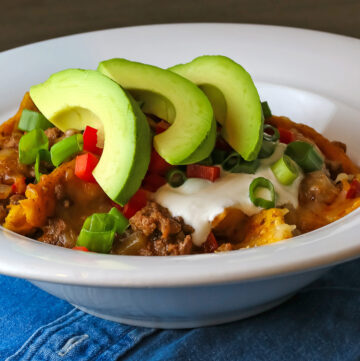When I was a little girl I was a picky eater. My mother tried everything to get me to eat more fruits and vegetables. I liked apples and bananas but anything more exotic made me shake my head no. If she could disguise them I would think they were a treat instead of something “healthy.” Her methods may have been unorthodox, but they worked. To this day I consider chocolate covered raisins and Fig Newton cookies special indulgences!
Figs are The Artist’s favorite fruit and he waits all year for them to come into season. When they do, he buys as many as he can and eats most of them before I can bake with them. Then at every restaurant we go to he turns straight to the dessert section hoping against hope that they will feature fig tarts, galettes, or crisps.
On a recent trip we were visiting friends in the Sierra Nevada foothills and were taken to a local stand to buy fresh produce for dinner. It was delightful to wander the rows, marveling at the variety of fruits, vegetables and flowers they grow. The trees were laden with perfect peaches and pears, the tomatoes vines were bending with the weight of the red, ripe fruits, and turning every corner presented even more surprises.

The Artist and his figs
But the most dramatic part of the garden was a magnificent fig tree that towered over everything. With branches nearly touching the ground, the figs were ready for picking and The Artist eagerly headed straight there to harvest as many as he could reach. While I was photographing everything in sight, he only had eyes for the fig tree.
We left the farm with our arms piled high, my mind racing with ideas of what we could do with our bounty. Everyone agreed that simple preparations were best. The vegetables were lightly sauteed and the figs were roasted with honey for dessert. Everyone was happily satiated as we reveled in the quality of the produce grown organically and left to ripen fully before being picked.
Figs originated in northern Asia Minor and are common in Mediterranean cuisines. They figure prominently in The Bible and there are scholars who believe the original forbidden fruit was a fig rather than an apple. Sumerian stone tablets record the use of figs as early as 2500 B.C. Cooked figs have been used as sweeteners for centuries prior to the proliferation of refined sugars.
The Spaniards brought figs to the Americas in the early 1500s and they made their way to California with the founders of the Catholic Missions that run from San Diego all the way north to Sonoma. They grew what are now known as Mission figs, a dark, sweet variety. In 1882 a San Joaquin Valley grower imported the Smyrna fig and renamed it Calimyrna. They are golden with a slightly nutty flavor. In the early 1900s the unique pollination methods needed for the Calimyrna fig were established and wide-scale production became a possibility. Today California produces 20% of the world production of figs.
Figs are an excellent source of dietary fiber and thought to aid in maintaining healthy blood glucose levels. Rich in complex carbohydrates and essential minerals such as potassium, iron and calcium. As a matter of fact, 1/2 cup of figs gives you the same amount of calcium as a the same amount of milk and are much more fun to snack on.
They have two short growing seasons; they start arriving in the markets in early summer and then again in late summer through the fall. The later figs are much sweeter and better choices for canning or jamming. When buying them look for fully ripe ones because they do not ripen after harvesting. They should be slightly wrinkled but still plump and if they have split slightly that is OK as long as they are not weeping or leaking. Avoid any that look shrunken, are oozing liquid, have moisture around the stem, are overly squishy, or have any mold on them.
It is best to use them as quickly as you can. Keep them on the counter where you will remember to eat them! Whether you use them to make jam, eat them out of hand, or bake them into delicious pastries, figs are a fruit worth finding whenever they are in season.

Honey Roasted Figs


- For the Dough
- 1-1/4 cups all-purpose flour
- 1 tbsp granulated sugar
- 1/2 tsp salt
- 4 tbsp (1/2 stick) cold unsalted butter, cut into 3/4-inch pieces
- 3 tbsp cold vegetable shortening, cut into 3/4-inch pieces
- 3 tbsp very cold water
- For the Filling
- 1-1/4 lb ripe figs, stemmed and quarteredlengthwise
- 1/3 cup firmly packed brown sugar
- 1-1/2 tsp finely grated lemon zest
- 1 tsp vanilla extract
- 2 tbsp heavy cream or milk
- 1/4 cup sliced almonds
- To make the Dough: in the bowl of a food processor, combine the flour, granulated sugar and salt and pulse to blend. Add the butter and shortening and pulse until reduced to 1/2-inch pieces. Add the water a little at a time and pulse until the dough just begins to come together in a rough mass.
- Transfer the dough to a work surface and shape into a 5-inch disk. Wrap with plastic wrap and refrigerate until well chilled, at least 2 hours.
- Preheat an oven to 400°F. Line a rimmed baking sheet with parchment paper.
- Lightly dust a work surface and a rolling pin with flour. Roll out the dough into a round slightly larger than 13 inches and about 1/8 inch thick. Lift and turn the dough several times as you roll to prevent sticking, and dust the surface and the rolling pin with additional flour as needed. Use a dough scraper or an icing spatula to loosen the pastry if it sticks. Trim off any ragged edges to make an even 13-inch round. Cover with plastic wrap and set aside.
- To make the Filling: in a large bowl, gently toss together the figs, brown sugar, lemon zest and vanilla, until all the ingredients are evenly distributed.
- Uncover the dough and transfer to the baking sheet. The edges of the dough round will hang over the pan edges. Arrange the figs in a pile in the center of the dough, leaving a 2-inch border uncovered. Fold the dough up and over the filling, pleating loosely all around the circle and leaving the galette open in the center. To form the pleats, using both hands, lift the edge of the dough up and over the fruit and then fold it underneath itself every 1 to 2 inches until the entire edge is a series of loose folds. Work the dough quickly with cold hands. If you linger, the heat from your fingers will melt the butter in the dough, resulting in a tougher crust. To cool your hands before you begin, run them under very cold water and then dry them well.
- Brush the pleated dough with the cream. Sprinkle the almonds on top of the dough and press on them lightly to help them stick.
- Bake until the crust is golden and the figs are tender when pierced with the tip of a knife, about 40 minutes. Transfer the galette to a wire rack and let cool. Serve warm or at room temperature.
- Yield: 6 to 8 servings


- 1 lb (450g) fresh figs
- 4 to 6 branches fresh thyme
- 2 tbsp red wine or liquor, such as Chartreuse, Pernod, Grand Marnier or Cointreau
- 1 tbsp dark or light brown sugar
- 2 tbsp honey
- 3 (1-inch) (3cm) strips of fresh lemon zest
- Preheat the oven to 400ºF (200ºC).
- Slice the tough stem end off the figs and slice each in half lengthwise.
- Toss the figs in a large baking dish with the thyme, red wine or liquor, brown sugar, honey, and lemon zest. Turn the figs so that they are all cut side down in the baking dish, in a single layer.
- For figs that are softer and juicier, cover the baking dish snugly with foil and bake for 15 to 20 minutes, or until the figs are softened and cooked through.
- For figs that are firmer, with less liquid, roast them in the oven, uncovered, for 30 minutes, or until cooked through. When done, remove the baking dish from oven, lift off the foil, and let the figs cool completely.
- Yield: 6 to 8 servings
- Variation: For more savory figs, replace the liquor with one or two tablespoons balsamic or sherry vinegar.
- Storage: Roasted figs can be stored in the refrigerator for up to one week.
Thank You!







